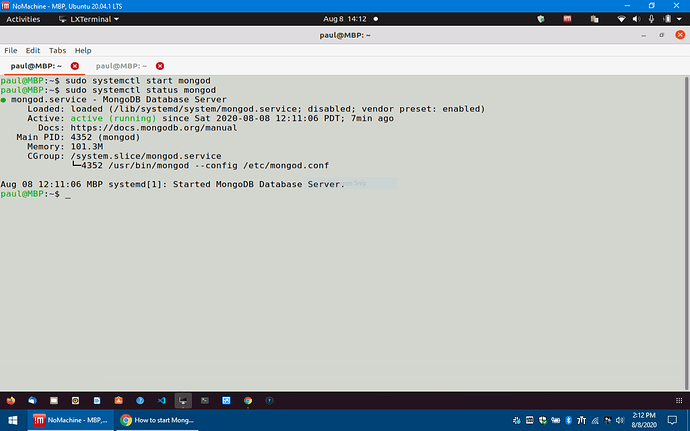

This means it could be visible to other people that also has access to this workstation. Providing the password as a mongo parameter has the drawback that the password appears in the command history.

In case the MongoDB server is configured with authentication - that should be the case for each production setup - you have to provide an username, a password and if your user only has access rights to one database you also must provide the name of this database: Number of files is 256, should be at least 1000 > T00:00:21.969+0100 I CONTROL ** WARNING: You are running this process as the root user, which is not recommended. Mind the warning: Authorization is disabled in this case. You should see the following output if everything works:
Start mongodb server cli full#
There is no authentication configured by default and you've full admin privileges. If you've started the server locally with the default configuration, then you are ready to go. To establish a connection from your terminal to the MongoDB server type the following command in a new terminal window: Mongod -dbpath ~/mongodb-tutorial -authĬonnect the MongoDB Command Line Client to the Server Start a MongoDB service process with authentication To enable authentication, create an user, stop the MongoDB process and start it again with the following option: This means everybody who can reach the listening socket of the MongoDB process, can connect to the database as admin user without providing an username/password. Note: The MongoDB server now runs without authentication. Do this by using the following two commands. We can now move on to enabling the MongoDB service so that it loads at startup.
Start mongodb server cli install#
Start a MongoDB service process without authentication The command below should install the MongoDB server software, and it’s command-line tools. Tip: If you have too many options required to start the MongoDB server, it is recommended to use configuration file rather than command line options. mongod -port 27018 -dbpath C:mongodbdatadb -logpath C:mongodblogsmongodb.log -smallfiles. Last but not least we can start the MongoDB server process, by executing: You can start the MongoDB server with all above options in one command line. To follow this tutorial, let's just create a data directory in the home directory: Start a MongoDB service process with authentication mongod -dbpath /mongodb-tutorial -auth Connect the MongoDB Command Line Client to the Server. This folder can be named and placed on any location on the server. In case you want to install MongoDB on a Mac, you can execute the following command:Īfter the installation succeeded, it is required to create a directory on the machine where the MongoDB process should save its data. Now in order to stop all server groups in main-server-group: /server-groupmain-server-group:stop-servers.
Start mongodb server cli how to#
In case of a Linux machine execute the following command to do this: Here is a quick tip: How to start or stop all servers belonging to a WildFly Server Group using the Command Line Interface. Before a MongoDB server can be started, the binaries must be installed on the machine.


 0 kommentar(er)
0 kommentar(er)
